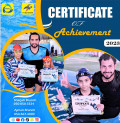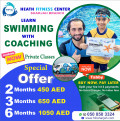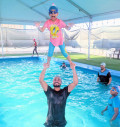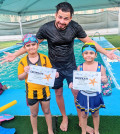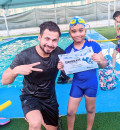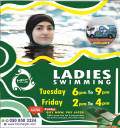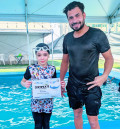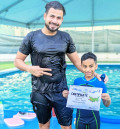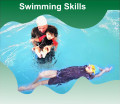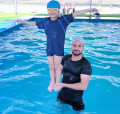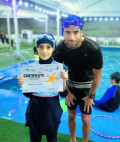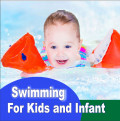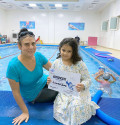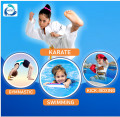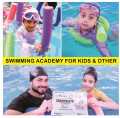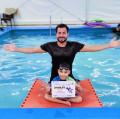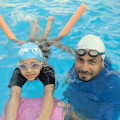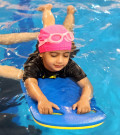
Small Kids Swimming Fun Activities inside the Pool
2024-04-04 - swimmingIntroduction
Swimming is not just a recreational activity; it's a life
skill that holds immense importance, especially for small kids. Not only does
it provide physical exercise, but it also instills confidence, teaches water
safety, and offers a plethora of fun activities to engage in. Let's explore
some exciting ways small kids can enjoy their time in the swimming pool.
Benefits of Swimming for Small Kids
Swimming offers numerous benefits for small kids beyond just
fun in the water. It promotes physical fitness, enhances water safety skills,
and aids in social development.
Different Activities for Small Kids in the Swimming Pool
Floating and Kicking
Teaching small kids to float on their backs and kick their
legs helps build confidence in the water and lays the foundation for basic
swimming techniques.
Water Games
Games like "Marco Polo" or "Red Light, Green
Light" not only entertain kids but also improve their swimming abilities
and coordination.
Learning Strokes
Introducing basic swimming strokes like freestyle and
backstroke in a playful manner helps kids become comfortable with different
movements in the water.
Pool Toys
Pool noodles, kickboards, and inflatable toys add an element
of fun to swimming sessions while aiding in balance and coordination.
Safety Measures
While swimming is enjoyable, safety should always be a
priority:
Supervision: Ensure constant adult supervision
whenever kids are in or around the pool.
Swimming Aids: Use appropriate floatation devices to
support young swimmers.
Sun Protection: Apply sunscreen and provide shade to
prevent sunburn.
How to Encourage Small Kids to Swim:
Encouraging small kids to swim involves creating a positive
and supportive environment:
Make it Fun: Incorporate games and activities that
make swimming enjoyable.
Build Confidence: Offer praise and encouragement to
boost their confidence in the water.
Positive Reinforcement: Reward progress and effort to
motivate continued participation.
Choosing the Right Swimming Gear:
Selecting the right gear enhances the swimming experience:
Swimwear: Choose comfortable and appropriate swimwear
that allows for easy movement.
Goggles: Protect kids' eyes from chlorine and make
underwater exploration more enjoyable.
Floatation Devices: Use floaties or life jackets to
provide added security for young swimmers.
Preparing for Swim Lessons:
Preparing for swim lessons involves finding the right
instructor and creating a conducive learning environment:
Finding a Suitable Instructor: Look for instructors
experienced in teaching young children and creating a supportive atmosphere.
Creating a Comfortable Environment: Ensure the pool
temperature is comfortable, and the surroundings are safe and inviting.
Setting Realistic Expectations: Understand that progress may
vary for each child and be patient with their learning journey.
Overcoming Common Challenges:
Many kids face challenges when learning to swim, but with
patience and support, they can overcome them:
Fear of Water: Gradually introduce kids to the water
and allow them to acclimate at their own pace.
Discomfort with Floating: Practice floating
techniques regularly to help kids feel more comfortable and relaxed in the
water.
Frustration with Learning Strokes: Break down strokes
into manageable steps and celebrate small achievements to keep kids motivated.
Monitoring Progress and Celebrating Achievements:
Tracking kids' progress and celebrating their achievements
encourages continued participation and builds confidence:
Tracking Milestones: Keep a record of swimming
milestones achieved, such as floating independently or mastering a new stroke.
Rewarding Effort: Offer praise, stickers, or small
rewards to acknowledge kids' efforts and progress in swimming.
Conclusion:
Swimming offers a myriad of benefits for small kids, from
physical fitness to water safety skills and social development. By
incorporating fun activities, providing a supportive environment, and
prioritizing safety, parents and caregivers can help their children enjoy and
excel in the water.







.jpg)




















